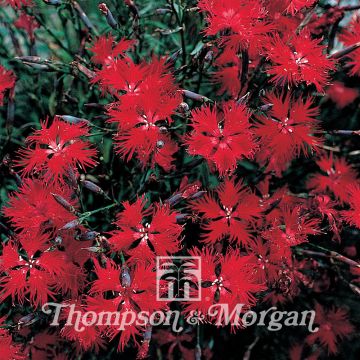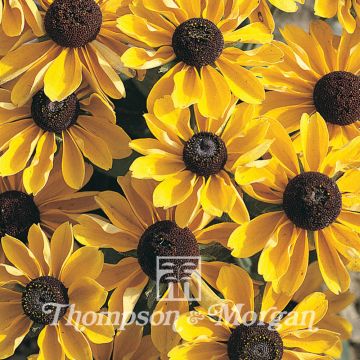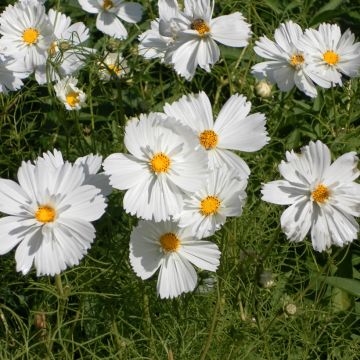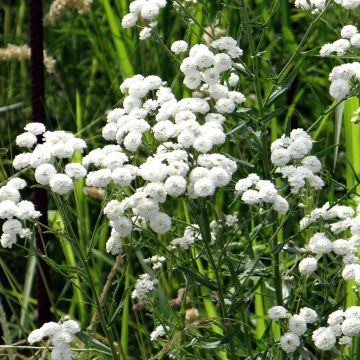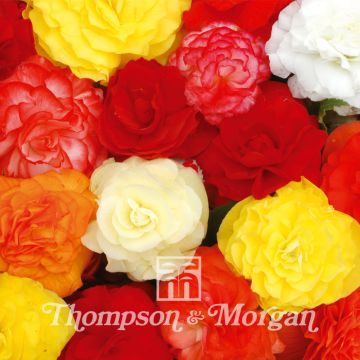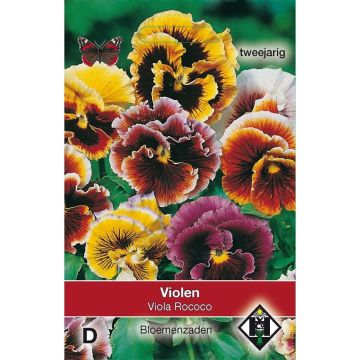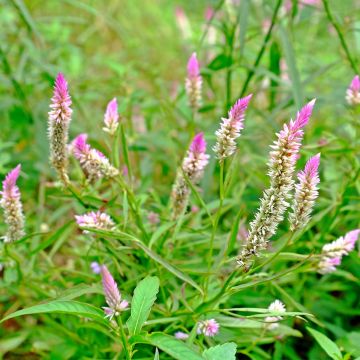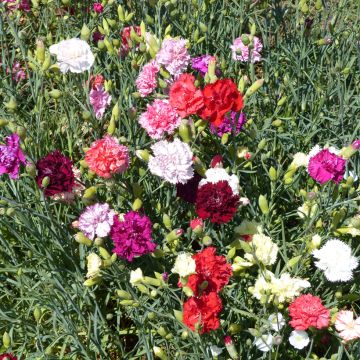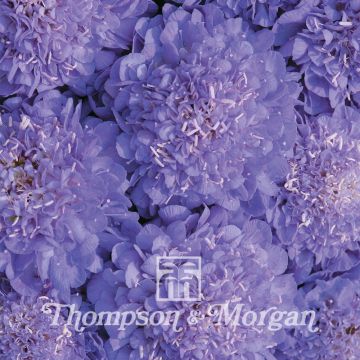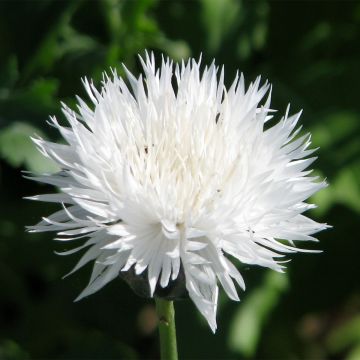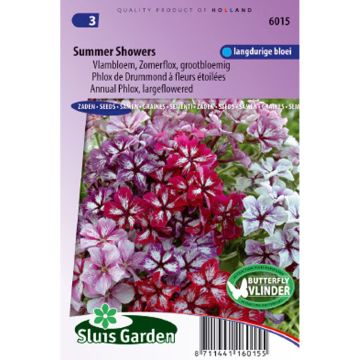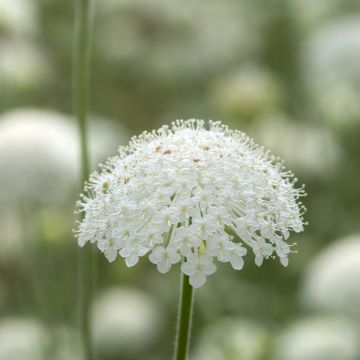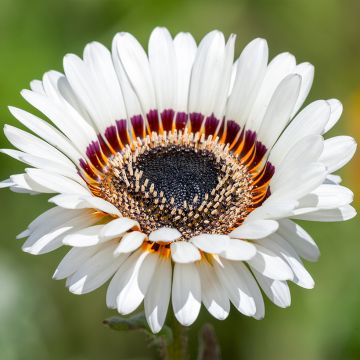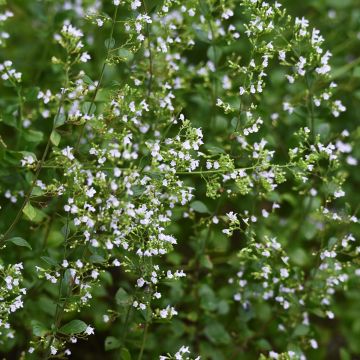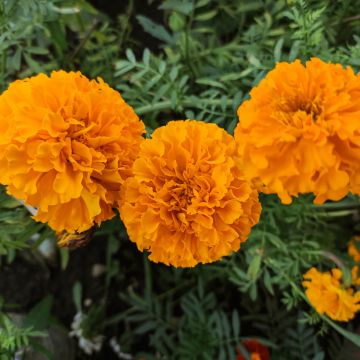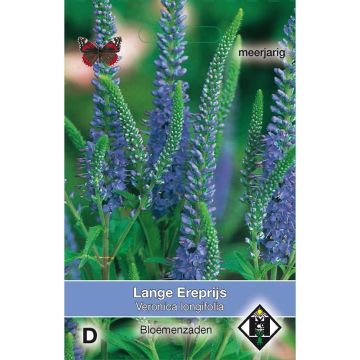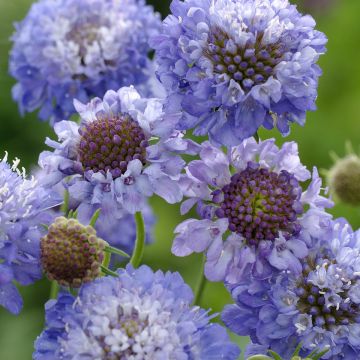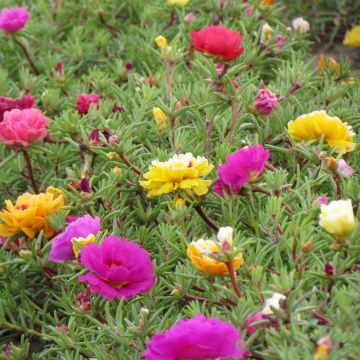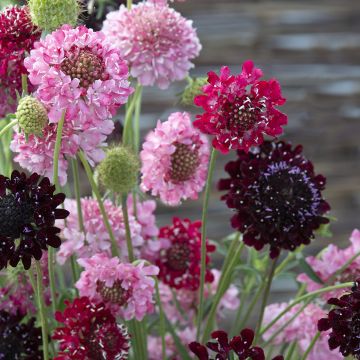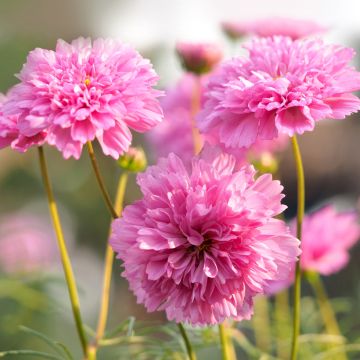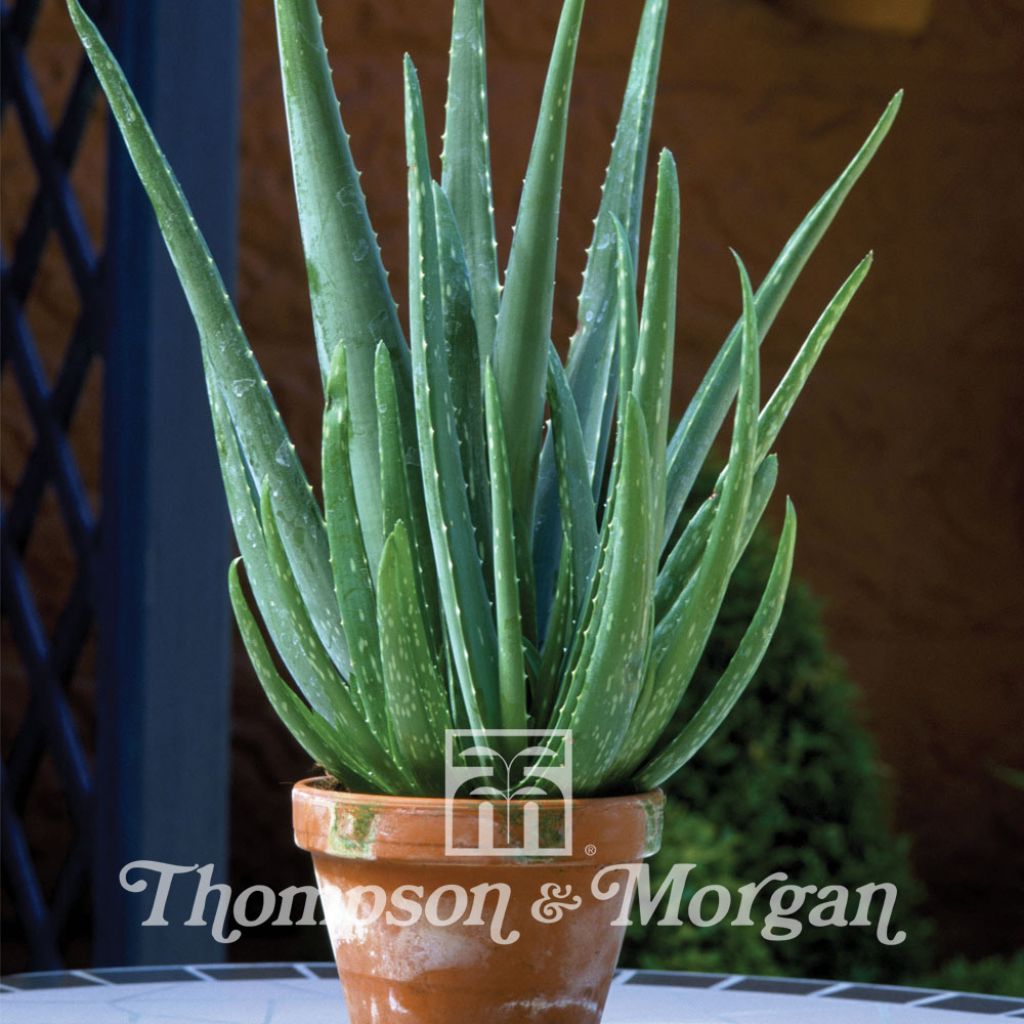

Graines d'Aloe vera - Aloes vrai - Aloes officinal
Aloe vera seeds
Aloe vera
True aloe, Medicinal aloe
This plant carries a 6 months recovery warranty
More information
We guarantee the quality of our plants for a full growing cycle, and will replace at our expense any plant that fails to recover under normal climatic and planting conditions.
Seed-only orders are dispatched by sealed envelope. The delivery charge for seed-only orders is €3.90.
Does this plant fit my garden?
Set up your Plantfit profile →
Description
Aloe vera, also known as true aloe or medicinal aloe, is famous for its medicinal properties. It is composed of a rosette of succulent and fleshy narrow and pointed leaves, greenish-grey in colour, with dentate margins. This perennial plant is frost-sensitive. In winter or spring, it adorns itself with pale-yellow to orange flower spikes, if the conditions are right. A plant of arid lands and mild climates, it thrives in rocky terrains or on gravelly embankments. It must be grown in well-drained soil, in full sun or partial shade. In regions with cold winters, grow it in pots that can be stored away during winter.
The origins of Aloe vera or Aloe barbadensis are lost in the mists of time, as it has been cultivated since antiquity, but also due to the absence of wild populations. It seems likely that this famous representative of the Asphodelaceae family originated from the Arabian Peninsula, which is also the original area of a very closely related species called Aloe officinalis. Naturalised Aloe vera plants grow in dry regions, in arid soils.
It is a succulent perennial plant with short stems, persistent leaves, and shallow roots that grow in tall clumps, ranging from 40 to 60cm (16 to 24in) in height and at least 40cm (16in) wide. They sometimes form large colonies. The alternate leaves, nestled within each other, form a rosette over time. They are narrow and pointed, wider at the base, pale-green to glaucous, with spiny toothed margins. The terminal inflorescence rises from the rosette in a lateral, not central, position. Carried at a height of 1m (3ft), the tubular flowers are grouped in racemes. They are mostly pale-yellow, sometimes speckled with purple. Flowering usually occurs in winter and spring.
In mild climates, Aloe vera can be grown in the ground as it is hardy to around -5°C (23°F). It will form beautiful clumps, with exotic appearances, in sloping or rocky well-drained soil, or even in dry stone walls. Elsewhere, it can be grown in a wider than tall pot (it multiplies very quickly) to enjoy its medicinal properties or its unique charm.
Aloe juice is contained in the pericyclic cells and flows spontaneously when the leaves are cut. Aloe gel, on the other hand, is made up of the mucilage from the polyhedral cells in the central region of the leaf.
- Aloe juice. Traditionally, the juice was harvested by allowing it to flow spontaneously from the leaves, which were incised while still attached to the plant. After drying in the heat, the dried form of the sap is used to obtain powders and tinctures, used in pharmaceutical specialties for digestive purposes.
- Aloe gel. Manual harvesting of aloe gel involves cutting the leaves longitudinally and scraping the mucilaginous central pulp. To avoid laxative effects, the gel should not contain latex. This fresh pulp quickly degrades due to oxidation when exposed to air, which limits its use to those who have fresh aloe leaves on hand. The gel is viscous, transparent, odourless, and slightly bitter.
Report an error about the product description
Flowering
Foliage
Plant habit
Botanical data
Aloe
vera
Asparagaceae
True aloe, Medicinal aloe
Aloe barbadensis
West Asia
Other Thompson and Morgan seeds
Planting and care
Sow the Aloe vera seeds immediately upon receipt, in pots or containers filled with a mixture of turf and moist sand. Cover with a very small pinch of this mixture or vermiculite. Place everything in a mini-greenhouse or a warm place and maintain at a constant temperature between 20 to 25°C (68 to 77°F). Light is necessary for germination. Keep the surface of the compost moist but not waterlogged. Germination usually takes 1 to 4 months. When the plants are large enough to handle, transplant them into 7.5cm (3in) pots or containers.
Once they have grown well, transplant them again into 13cm (5in) pots and finally into containers with a minimum diameter of 20cm (8in). Aloes thrive in a hot and dry climate, as well as well-drained soil. They can tolerate light frosts once they are well established. In the ground, Aloe vera will thrive in dappled sunlight, especially in regions with strong sunlight. This is an important step to follow when you bring the plant outside in the spring. Full sun will scorch the foliage.
Sowing period
Intended location
This item has not been reviewed yet - be the first to leave a review about it.
Flower seeds
Haven't found what you were looking for?
Hardiness is the lowest winter temperature a plant can endure without suffering serious damage or even dying. However, hardiness is affected by location (a sheltered area, such as a patio), protection (winter cover) and soil type (hardiness is improved by well-drained soil).

Photo Sharing Terms & Conditions
In order to encourage gardeners to interact and share their experiences, Promesse de fleurs offers various media enabling content to be uploaded onto its Site - in particular via the ‘Photo sharing’ module.
The User agrees to refrain from:
- Posting any content that is illegal, prejudicial, insulting, racist, inciteful to hatred, revisionist, contrary to public decency, that infringes on privacy or on the privacy rights of third parties, in particular the publicity rights of persons and goods, intellectual property rights, or the right to privacy.
- Submitting content on behalf of a third party;
- Impersonate the identity of a third party and/or publish any personal information about a third party;
In general, the User undertakes to refrain from any unethical behaviour.
All Content (in particular text, comments, files, images, photos, videos, creative works, etc.), which may be subject to property or intellectual property rights, image or other private rights, shall remain the property of the User, subject to the limited rights granted by the terms of the licence granted by Promesse de fleurs as stated below. Users are at liberty to publish or not to publish such Content on the Site, notably via the ‘Photo Sharing’ facility, and accept that this Content shall be made public and freely accessible, notably on the Internet.
Users further acknowledge, undertake to have ,and guarantee that they hold all necessary rights and permissions to publish such material on the Site, in particular with regard to the legislation in force pertaining to any privacy, property, intellectual property, image, or contractual rights, or rights of any other nature. By publishing such Content on the Site, Users acknowledge accepting full liability as publishers of the Content within the meaning of the law, and grant Promesse de fleurs, free of charge, an inclusive, worldwide licence for the said Content for the entire duration of its publication, including all reproduction, representation, up/downloading, displaying, performing, transmission, and storage rights.
Users also grant permission for their name to be linked to the Content and accept that this link may not always be made available.
By engaging in posting material, Users consent to their Content becoming automatically accessible on the Internet, in particular on other sites and/or blogs and/or web pages of the Promesse de fleurs site, including in particular social pages and the Promesse de fleurs catalogue.
Users may secure the removal of entrusted content free of charge by issuing a simple request via our contact form.
The flowering period indicated on our website applies to countries and regions located in USDA zone 8 (France, the United Kingdom, Ireland, the Netherlands, etc.)
It will vary according to where you live:
- In zones 9 to 10 (Italy, Spain, Greece, etc.), flowering will occur about 2 to 4 weeks earlier.
- In zones 6 to 7 (Germany, Poland, Slovenia, and lower mountainous regions), flowering will be delayed by 2 to 3 weeks.
- In zone 5 (Central Europe, Scandinavia), blooming will be delayed by 3 to 5 weeks.
In temperate climates, pruning of spring-flowering shrubs (forsythia, spireas, etc.) should be done just after flowering.
Pruning of summer-flowering shrubs (Indian Lilac, Perovskia, etc.) can be done in winter or spring.
In cold regions as well as with frost-sensitive plants, avoid pruning too early when severe frosts may still occur.
The planting period indicated on our website applies to countries and regions located in USDA zone 8 (France, United Kingdom, Ireland, Netherlands).
It will vary according to where you live:
- In Mediterranean zones (Marseille, Madrid, Milan, etc.), autumn and winter are the best planting periods.
- In continental zones (Strasbourg, Munich, Vienna, etc.), delay planting by 2 to 3 weeks in spring and bring it forward by 2 to 4 weeks in autumn.
- In mountainous regions (the Alps, Pyrenees, Carpathians, etc.), it is best to plant in late spring (May-June) or late summer (August-September).
The harvesting period indicated on our website applies to countries and regions in USDA zone 8 (France, England, Ireland, the Netherlands).
In colder areas (Scandinavia, Poland, Austria...) fruit and vegetable harvests are likely to be delayed by 3-4 weeks.
In warmer areas (Italy, Spain, Greece, etc.), harvesting will probably take place earlier, depending on weather conditions.
The sowing periods indicated on our website apply to countries and regions within USDA Zone 8 (France, UK, Ireland, Netherlands).
In colder areas (Scandinavia, Poland, Austria...), delay any outdoor sowing by 3-4 weeks, or sow under glass.
In warmer climes (Italy, Spain, Greece, etc.), bring outdoor sowing forward by a few weeks.

































